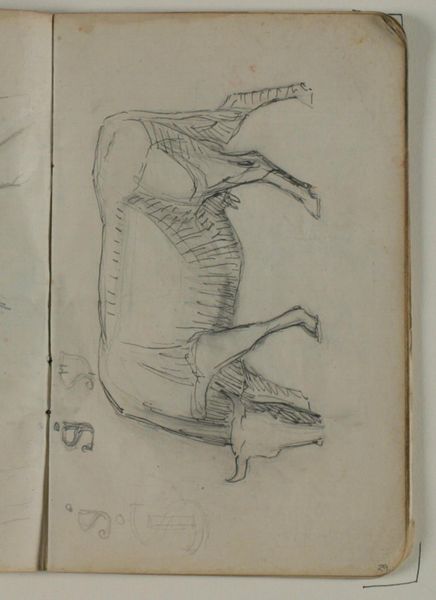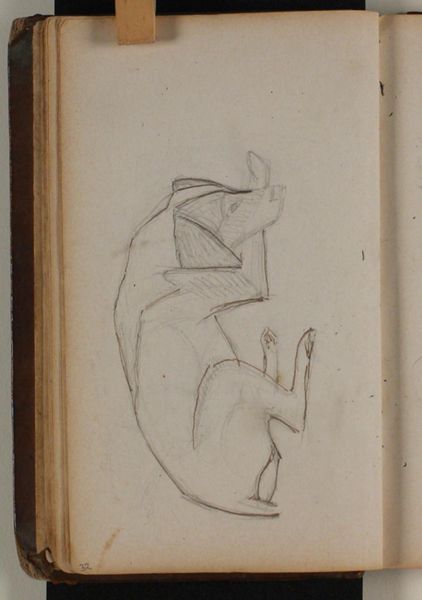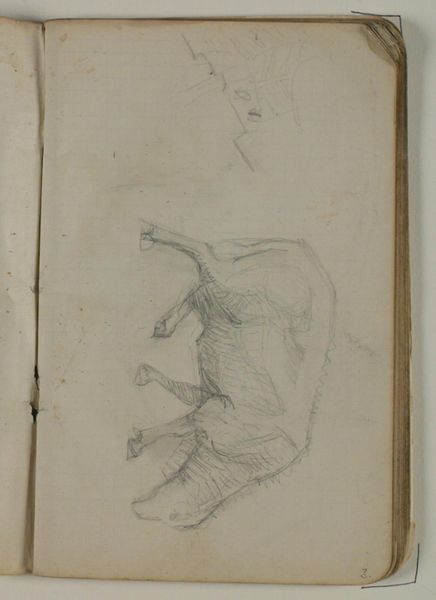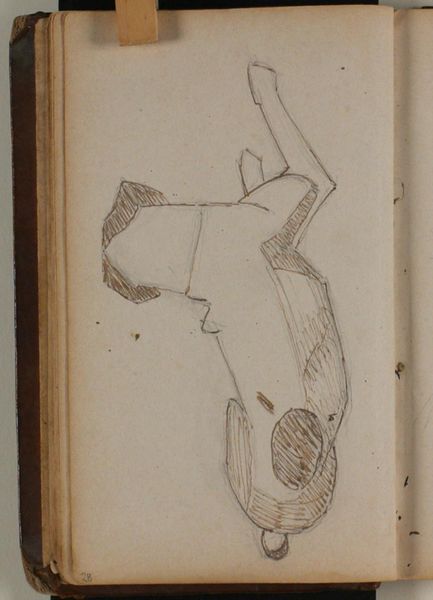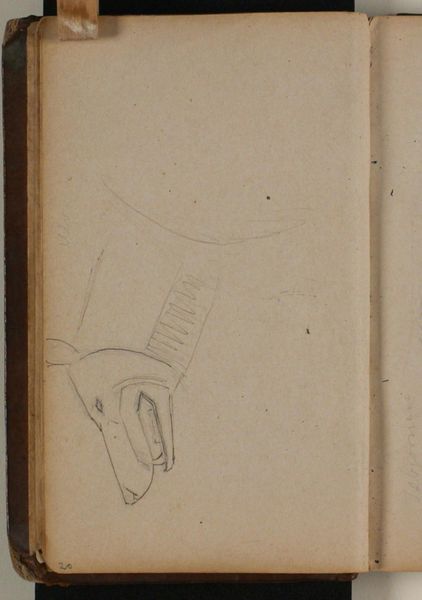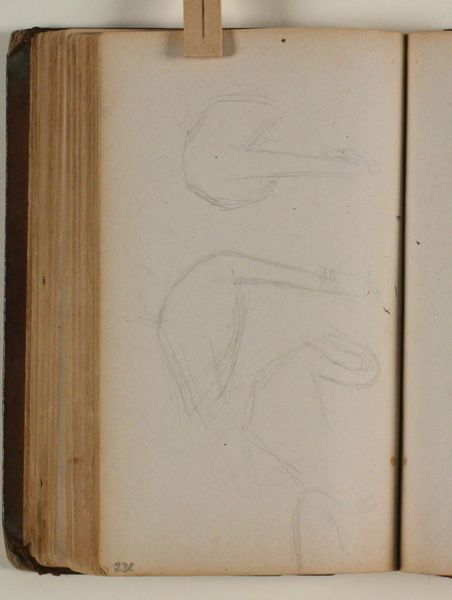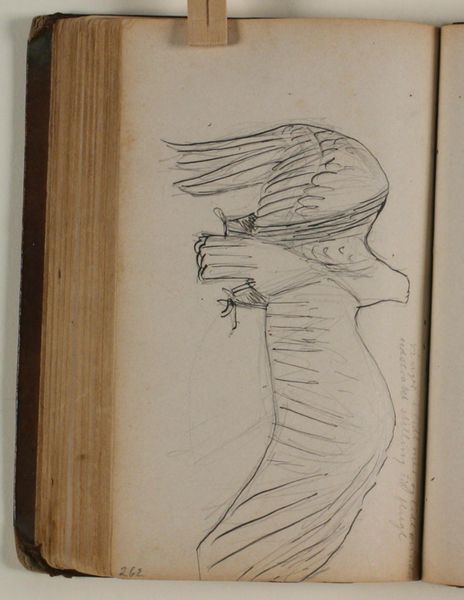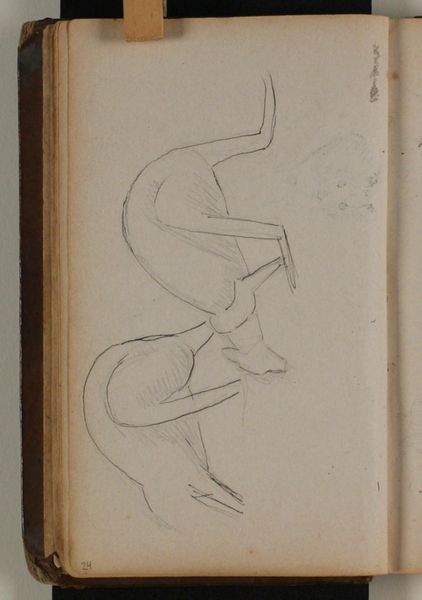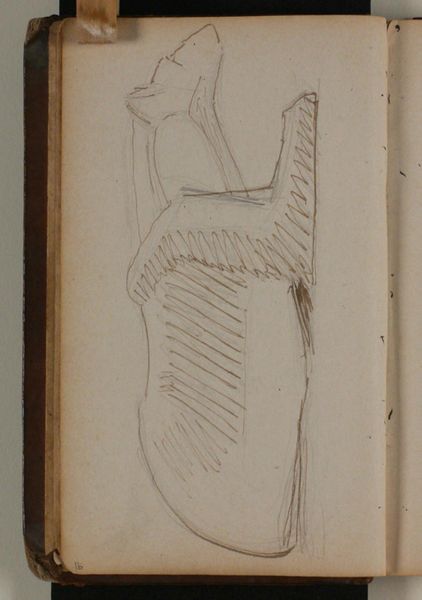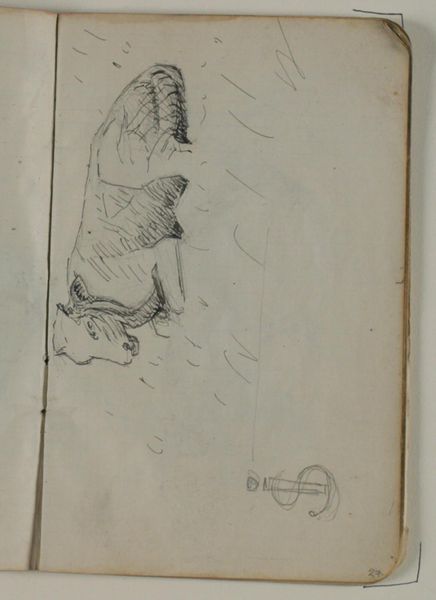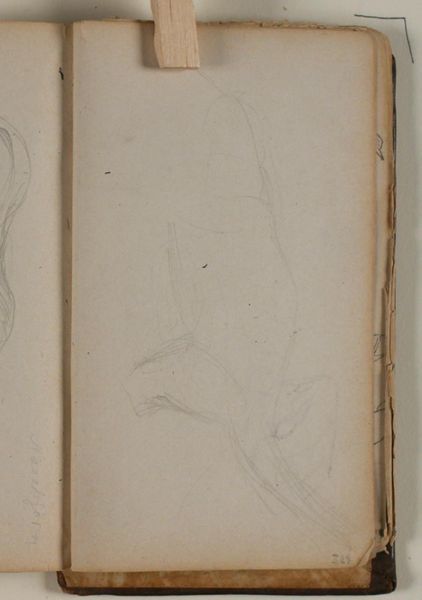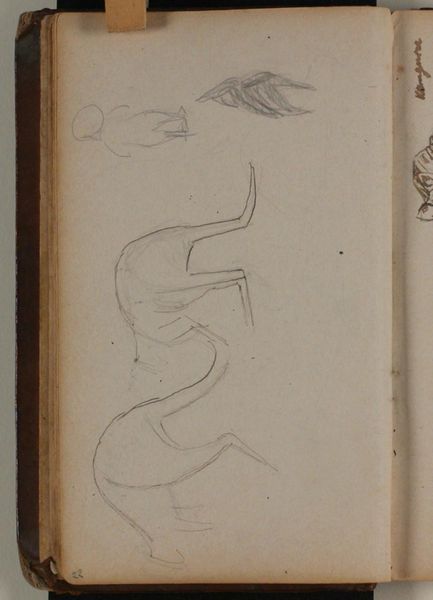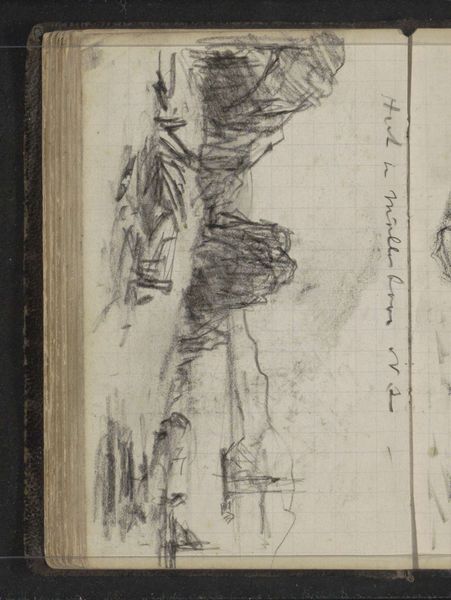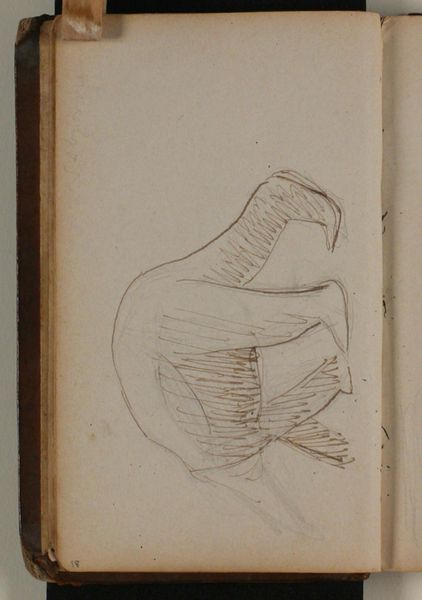
drawing, paper, pencil, graphite
#
drawing
#
landscape
#
figuration
#
paper
#
coloured pencil
#
pencil
#
graphite
Curator: What a wonderfully unassuming sketch. Niels Larsen Stevns created this work, "Studier af heste", sometime between 1864 and 1941. The medium looks like primarily graphite pencil on paper. What’s your first take on it? Editor: Well, it feels immediate and functional. I notice how the sketch is embedded in the very materiality of the open sketchbook, where we can see paper and its physical structure. I can see traces of process, the making. It is, fundamentally, about the labor and craft of the artist. Curator: Absolutely. Think about where this sketchbook would have been used; possibly for studies towards a larger composition, as sources for details in a finished history painting perhaps, giving them new symbolic weight. Editor: The social function is important. But I’m also struck by how different art materials allow artists to generate images. Look at the way that these simple materials -- pencil and paper--are readily available and allowed this kind of spontaneous capture. It’s almost journalistic in its quick notations. Curator: A crucial point, given that Stevns worked during a time when art academies formalized art education, shaping public perception and legitimizing specific skills. One might expect finished compositions to take center stage, but we find raw observations instead. These horses in action, potentially part of larger compositions, end up capturing real moments. Editor: Exactly! We are left considering these working methods in artistic production, questioning these assumed divisions between sketches and art object, or the studio and sites that demand the ready transport of simple art material. This allows the artist to note his experience for study at any moment. It really highlights labor. Curator: Yes. The loose style makes you imagine the artist’s movement, his viewpoint as the scene unfolded before him, the culture that surrounds artistic institutions. Editor: Agreed. It invites us to look at what constitutes "art," consider materiality, labor, access. It speaks volumes.
Comments
No comments
Be the first to comment and join the conversation on the ultimate creative platform.
